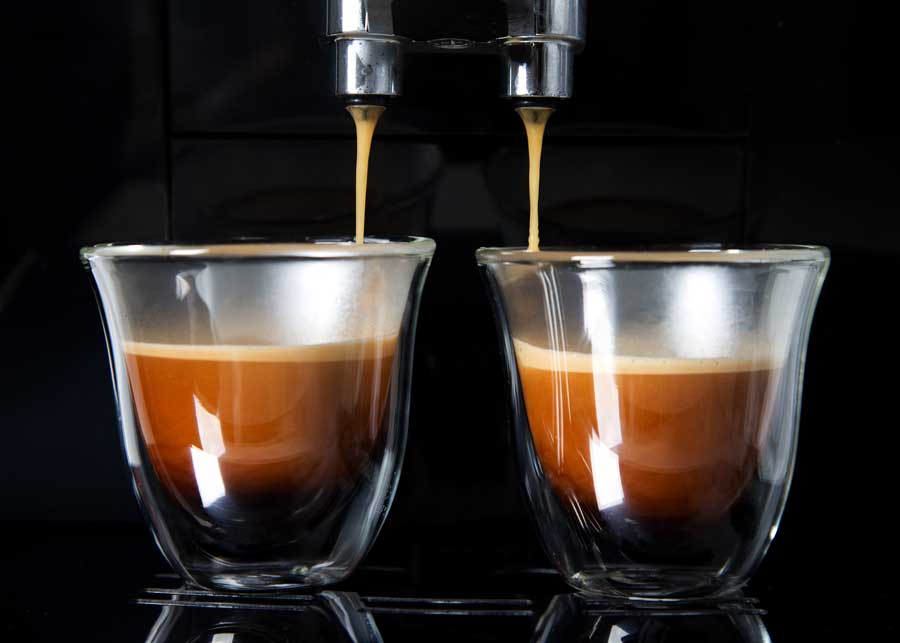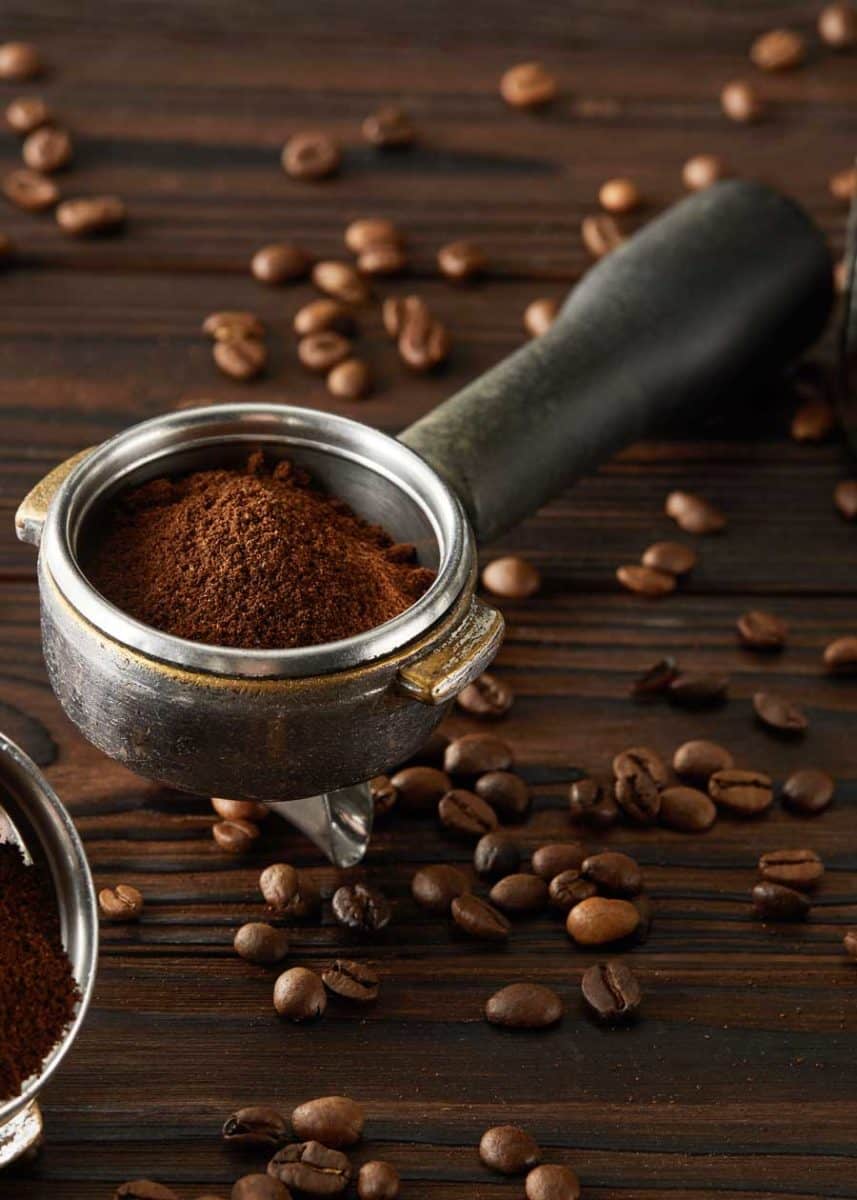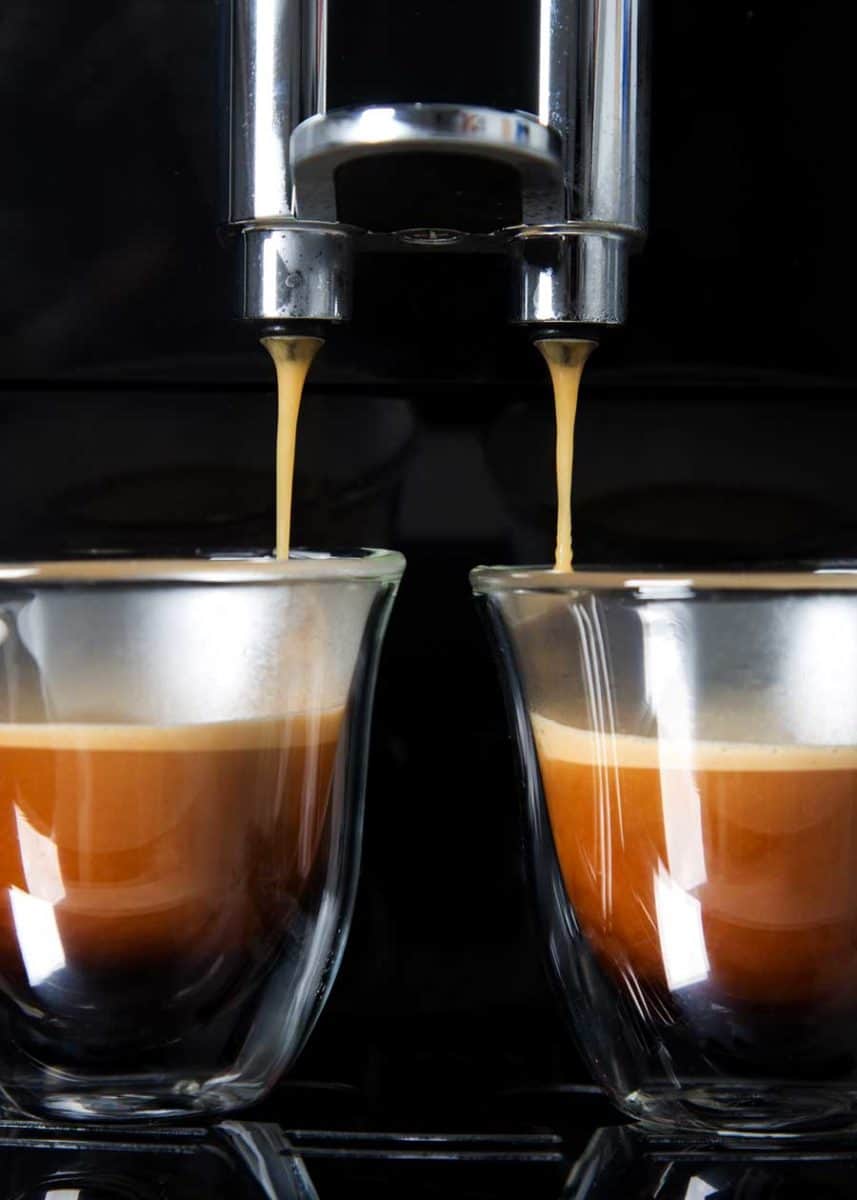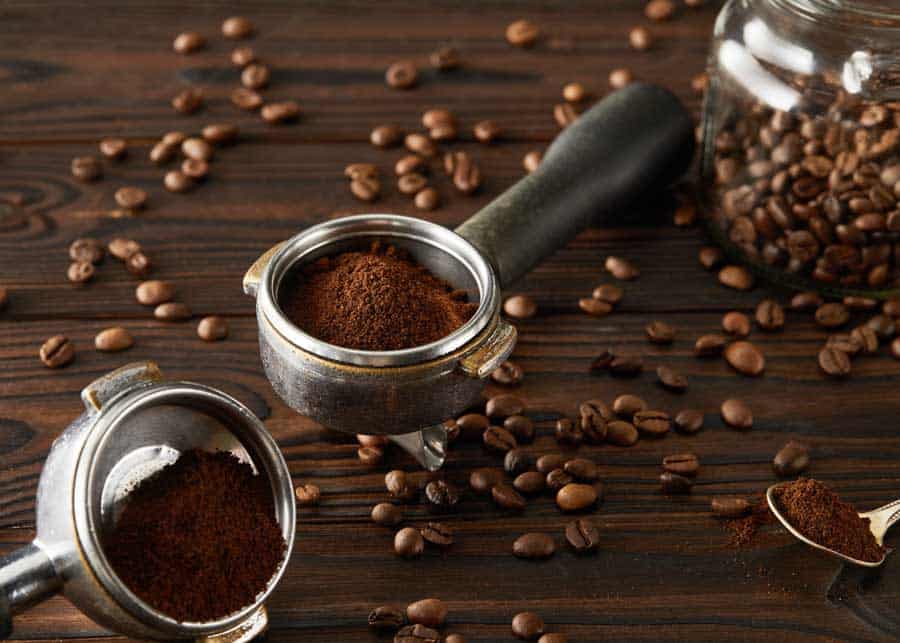Wondering which coffee beans to buy: espresso or coffee beans? In this post, you’ll learn the differences between espresso beans vs coffee beans. And how to choose the best beans for your brew method.
Espresso beans are coffee beans. They are grown the same, but there are key differences in how they are roasted, ground, and brewed. These differences have a direct effect on the body, mouth feel, and flavor notes of the coffee – from drip coffee to authentic espresso shots.

Some coffee is ground, some are whole beans. Some say light, medium, or dark roast, and some say espresso. What does it all mean? Which should you buy to have the best cup of coffee? Let’s find out.
What’s the Difference? Espresso vs Coffee Beans
There isn’t a major difference between espresso and coffee beans. A bean is a bean is a bean.
That said, some espresso coffee beans have robusta beans mixed in to help add crema. In contrast, a bag of high-quality regular coffee beans is usually all arabica beans.
There is a difference in how they’re roasted and brewed. A coffee made from espresso beans has been roasted longer and ground more finely than one made with coffee beans.
Different machines brew these drinks; they operate similarly but produce separate beverages.
Are Espresso Beans Different than Coffee Beans?
Espresso is a concentrated form of coffee. You make coffee by grinding beans, putting them into a filter, and running hot water over them.
Espresso is made by grinding beans very finely and forcing hot pressurized water through them. This results in a stronger-tasting flavor. Here’s how to describe those flavors.
Can Any Coffee Be Used for Espresso?
The beans used to make espresso and coffee are the same. However, you can’t use just any coffee to make a good espresso.

Espresso Beans vs Coffee Beans: 4 Differences
There are differences in the roast, grind, brews, and tastes of coffee and espresso.
Here’s what you need to know when choosing between roasts and grinds.
1. Roast
Coffee roast refers to how much a coffee bean changes on the heat. All beans have a specific roast, but the length of time varies depending on the kind of coffee they’ll be used for. There are five types of coffee bean roasts.
- The longer you roast a bean, the richer its flavor will be. That’s because heat removes the acidity as well as the caffeine.
- The longer you roast a bean, the less caffeine it will have. For the most caffeine, try the lightly roasted white coffee.
Espresso beans are typically roasted longer (darker) than the beans used for coffee.
- You usually brew coffee with light, medium, or medium-dark roasts.
- Espresso is made with dark roast beans, which is typically called an espresso roast.

2. Brewing
You brew regular coffee with machines like a drip, percolator, or French press.
Espresso doesn’t have as much flexibility in its tools because it needs high pressure for the extraction process. You’ll need an espresso machine to brew espresso. Any other method isn’t espresso. You need high pressure for espresso extraction.
3. Grind
Grind size refers to how coarse or fine the individual coffee grounds are. The grind determines how quickly water will extract the coffee from the grounds.
Larger, coarser grinds have less surface area for the water to pass over and will result in less extraction than smaller, finer particles of fine grind.
- You brew coffee by slowly pouring water over the grounds, so you can use a more coarsely ground bean, as the water will have time to soak in.
- You brew espresso by quickly forcing water through the grounds, so you need to use a more finely ground bean to extract quickly. Using the incorrect grind will leave you with thin, watery espresso or coffee with grinds at the bottom.
Some coffee makers and espresso makers come with built-in coffee grinders.
Here’s our pick for the best coffee grinders (2 types).
4. Taste
The taste of coffee or espresso is not as simple as you might think. Coffee bean experts will talk about the flavor profile, aroma, and mouthfeel of different types of coffee.
You can take a class that explains the differences in these characteristics, and there’s an entire lexicon devoted to them.
To keep it simple here, we will speak in general terms about the taste.
- Espresso has a bolder, less-acidic taste that feels heavier in your mouth. It has the rich coffee flavor, typical of good strong coffee. The addition of some robusta beans can also help with flavor and crema.
- Coffee has a lighter, more acidic taste that is naturally sweet. The amount of bitterness varies between the roasts of coffee as well. There will always be bitterness in coffee, but it won’t dominate the taste if it’s a well-brewed cup.
Did you know that you can grind coffee without a grinder?

Can You Use Coffee Beans for Espresso?
Technically, you can use coffee beans for espresso, but you don’t want to if you can help it. There aren’t any rules against it, but the results may disappoint you, especially if you’re using pre-ground coffee. It would be better to use whole beans, so you can adjust their grind size.
When you buy coffee labeled as espresso roast, you buy what the roasters feel is the best bean for brewing espresso. Espresso beans have been roasted and ground to specifications that let the beans shine and give you a great-tasting brew.
Coffee beans are roasted and ground to enhance their flavor. So, while it is possible to use coffee beans for espresso beans, you won’t achieve optimal results.
You can use either Robusta or Arabica beans for both making regular coffee or espresso.
What Should You Choose for the Best Coffee?
Unfortunately, there’s no straightforward answer to this question because it depends on your preferences. Some tips may help you select the best coffee for you, though.
- To start, buy yourself a bean grinder and purchase whole bean coffee or espresso. This will give you a fresher cup than if you start with pre-ground beans.
- If you’re able to do so, buy a pack of each type of roast and try them out at home. You can even go so far as to brew a pot of each at the same time and do a side-by-side comparison. This should make what you do or don’t like about each one more apparent.
- Once you have an idea of which roast you prefer, you can explore different flavor profiles. You’ll see beans in the store that come from all over the world.
Roasters may describe a bean as fruity and floral, or as nutty and chocolaty. With such differing descriptions, choosing a specific type of coffee may feel overwhelming.
What Type of Flavors Do you Like?
If you don’t want to try every kind of coffee, it may help you to think about other beverages that you drink.
- If you drink beer, do you like stout or sour beer?
- If you drink tea, do you like black, green, or herbal teas?
When you start with what you do know, you can make educated guesses about what will be the best coffee for you.
With this in mind, get out there and get brewing!
Here’s how espresso and coffee compare as prepared drinks.

Learn more about different coffee-producing countries from around the world.
Your Turn
What is your favorite type of coffee bean and roast? And how do you like to prepare them? Please share your preferences in the comments!
- About the Author
- Latest Posts
Bryan Haines is a co-founder and writer on EnjoyJava – and is working to make it the best coffee blog in the world.
He is a travel blogger at Storyteller Travel and blogs about photography at Storyteller Tech. He is also co-founder of Storyteller Media, a company he started with his wife, Dena.

Gary Moore
Sunday 11th of September 2022
Italians make the best espresso period. Try Illy Intenso or some of the Kimbo Bar range, although there are several different Kimbo Bar coffees I'm still trying to work out which I had in Naples. Italy has a lot of different coffee companies in the different regions. One to avoid is Lavazza I've never found a good one in any supermarket.
Mark Wolfson
Tuesday 23rd of August 2022
I enjoy the lighter roasts for espresso, and darker roasts for French press.
B. Ross Ashley
Monday 8th of August 2022
I love Café Cubano, espresso roast, fine ground in my burr grinder, in my Aeropress with a steel filter. Makes a lovely Cuban espresso when a little is whipped with brown sugar and carefully poured on top of the rest.
Bryan Haines
Friday 12th of August 2022
Sounds amazing - thanks for sharing your favorite. Now we'll have to try it!